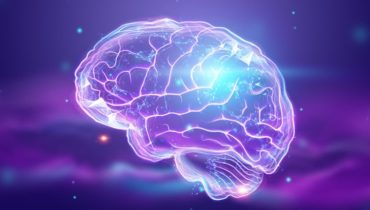Wouldn’t it be fantastic if we could all carry charts or a list of emotions around so that when someone asks us how we are, we could just point? Not all of us are able to express ourselves freely. Emotions are a fickle thing. We can’t always put our finger on what we’re feeling. Sometimes, we can’t even name it, let alone describe it!
“I feel anxious,” or “I feel angry” can get our message across quite quickly and efficiently. But what happens when someone asks us to elaborate a bit? We all have the same feelings, but we express them in different ways. What’s more, we also experience them differently or in varying intensities. That’s why it’s so hard to explain to others how we feel.
Furthermore, there are over 34,000 different feelings that humans can experience. There’s a famous saying that emotions should make us aware and inform us, not rule us. But with 34,000 different kinds of them and only one of us, how do we even begin to understand and fight them?
Well, we don’t actually have to fight them. Awareness is the first step toward understanding, and understanding will ultimately lead to our being in control. So here’s a list of emotions that will help us become aware and verbalize our feelings.
Five Major Emotions
Although there are over thirty thousand of them, emotions can generally fall into one of five groups. Those are:
Enjoyment
Enjoyment is the feeling of happiness brought on by something we enjoy. When we’re enjoying ourselves, we feel calm, safe, relaxed, happy, and content. Enjoyment might also stem from amusement or other types of pleasure. It is usually followed by different facial expressions, such as smiling or laughter.
Anger
When we feel betrayed, hurt, or generally think that something utterly unfair happened to us, we get angry. Anger can also surge to the surface if we’re trapped, annoyed, or agitated. There are a lot of facial expressions that follow anger. We frown, clench our jaws, and narrow our eyes so that we could pin the object of our anger with a single furious gaze. We also use our bodies to express anger. Some of us might wave their hands, while others would pace, clench their fists, or even hold their breath. Anger, just like any other emotion, is versatile in expression.
Sadness
When we’ve lost something, or it has been taken from us, we miss it, and we feel sad. Sadness also often follows loneliness, which doesn’t stem from any loss but from the feeling of emptiness and disappointment. Sadness evokes feelings of sorrow and gloom. When we’re sad, most of us cry. Otherwise, we frown, have downturned eyes and mouth, and our faces writhe in sadness.
Fear
Fear is a natural response that’s a product of millions of years of evolution. It’s an emotional reaction to any type of threat. Other emotions can intensify fear or work alongside it to make us feel sheer horror. Of course, we can also get mildly scared or feel just a tinge of fear that some people even find thrilling and pleasurable.
Either way, fear is an unpleasant emotion that awakens when we think that something will hurt us or cause us harm. Anything that puts us in danger will also cause us to be afraid, which will, in turn, cause our eyes to go wide, our hearts to beat faster, and our palms to get overly sweaty or dry. Because it’s a part of the fight-or-flight reflex, fear will also cause us to either lash out or run away from the perceived danger.
Disgust
This emotion is the least pleasant of the top five on our list. Disgust is any sort of emotional reaction to something unpleasant. We’ll see little kids frown and stick their tongues out when they see anything that disgusts them (as if they can taste it). Disgust is a foul emotion that arises when we’re faced with something revolting, disturbing, or repulsive.
A More Comprehensive List of Emotions
Of course, some would dispute this categorization. Some people claim that anxiety is its own category or that confusion doesn’t fall into any of these. And what about awkwardness? That surely merits a category of its own, right? Well, yes, it seems as though they are right. Five categories simply can’t allow us to recognize all the differences that set emotions apart. A list of emotions with such broad categories can’t cover everything humans are able to feel.
For example, if we only have five categories, how do we tell similar emotions apart? Some are so similar that we tend to lump them together. But even though only nuisances set them apart, they are still individual emotions. If we can’t name them and recognize them as individual feelings, we won’t be able to understand them. That’s why many scientists were of the opinion that we needed more categories.
That’s why the results of a new study show that there are 27 different categories of emotions. Aside from the big five, the latest list of emotions looks something like this:
● Confusion
When we’re uncertain about something that we’re hearing or seeing. We are unsure how to proceed, and we don’t know what the best course of action is.
● Interest
We’re interested in something when we’d like to learn something new or something more about a specific event, person, or a thing.
● Sympathy
This one is tricky as it requires empathy. Sympathy means that we’re sad, mournful, or regretful over something that is happening to someone else (who we may or may not know personally).
● Anxiety
The feeling of restlessness, worry, and unprovoked fear that leaves the person thinking that an adverse outcome is imminent or that they are in danger or in harm’s way.
● Sexual Desire
A state of interest and motivation to engage in sexual activities.
● Triumph
When we accomplish something that we consider to be a great feat, we feel triumphant. We feel joy over our victory.
● Aesthetic Appreciation
When looking at something aesthetically pleasing or that appeals to us, we feel content and joyous over it — that’s aesthetic appreciation. We admire that item or person, and it intrigues us.
● Amusement
When we find something entertaining or funny, we say that it amuses us.
● Admiration
Sometimes we see, hear, or experience a person doing something that sparks respect and approval in us. Admiration can also spark the desire to do and be better. It can motivate and inspire us.
● Horror
When we experience something frightening (when something startles us, causes us the feeling of dismay), we usually feel horror afterward. We are revolted by it.
● Calmness
The utter feeling of relaxation, tranquility, and the absence of other strong, negative feelings is calmness.
● Awkwardness
When a situation or a person lacks social grace, we say that they are awkward. They can evoke the feeling of awkwardness in us.
● Craving
The feeling of need for something, usually a stimulus such as food, drink, or other forms of appealing sensations.
● Adoration
When we feel deep feelings of not only love but also respect, admiration, and worship, then we adore something or someone.
● Empathetic Pain
Some people are prone to feeling the suffering of others as if it were their own, and that’s empathetic pain.
● Entrancement
When we’re feeling delighted because an item or a person is simply so wonderfully enchanting, then we are entranced.
● Satisfaction
The feeling of gratification that overcomes us after specific needs, wishes, or expectations have been fulfilled.
● Awe
Sometimes, our feelings of wonder and respect can go beyond simple regard. When respect mixes with amazement or fear, then we are in awe of something or someone.
● Excitement
When a person, event, or an item makes us giddy and enthusiastic. We can barely wait to see, hear, or feel it as we’re overcome by eagerness.
● Envy
Sometimes, we feel jealous of other people’s success, things, or accomplishments. We resent both them and the fact that we aren’t in their place.
● Boredom
People get bored when they are understimulated or when they are experiencing something that doesn’t spark their interest.
● Romance
The feeling of a strong attraction and love, usually followed by sexual desire, toward another person.
● Nostalgia
We sometimes feel sentimental and wistful while we remember things, events, or people we once knew or experienced but can no longer have them as a part of our life.
The scientists who spearheaded this study used a series of videos or gifs to see how people reacted to them. The results allowed them to catalog all reactions into these 27 categories.
A Few Parting Words
Although not an ideal cheatsheet, this list of emotions can help us all identify our own reactions quickly and efficiently. Once we become aware of our feelings, we can rein them in if that’s necessary, or verbalize them if that was what we were struggling with in the first place.



